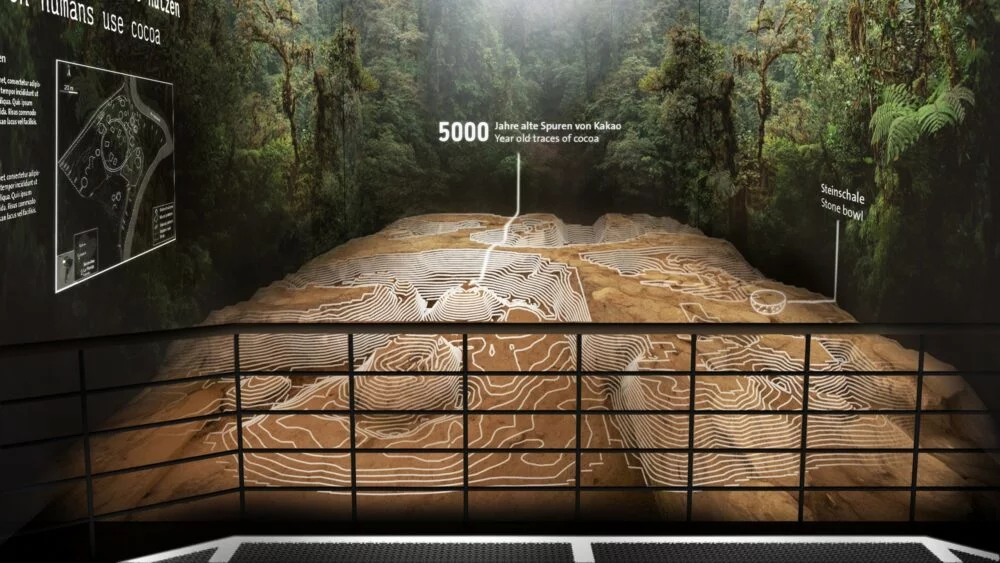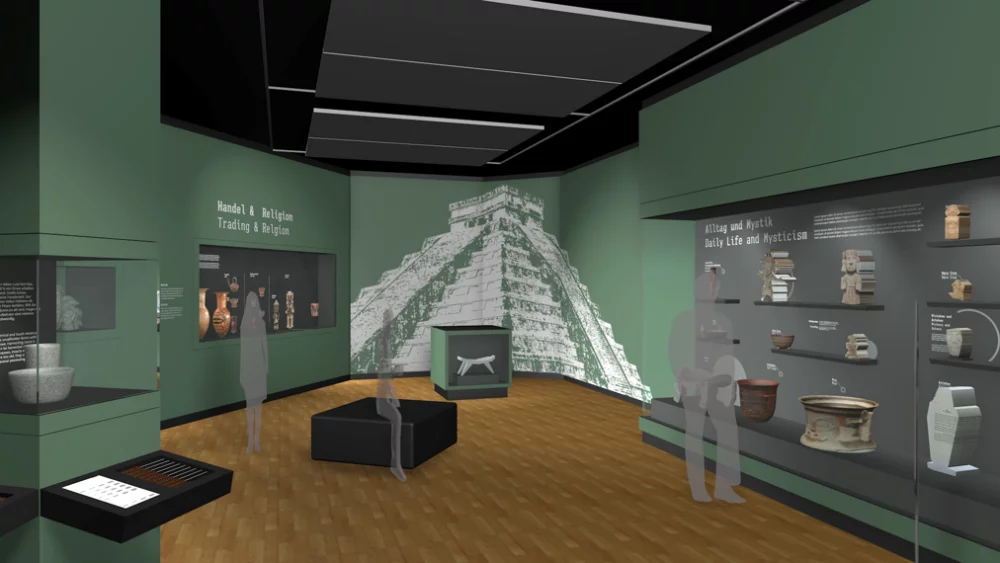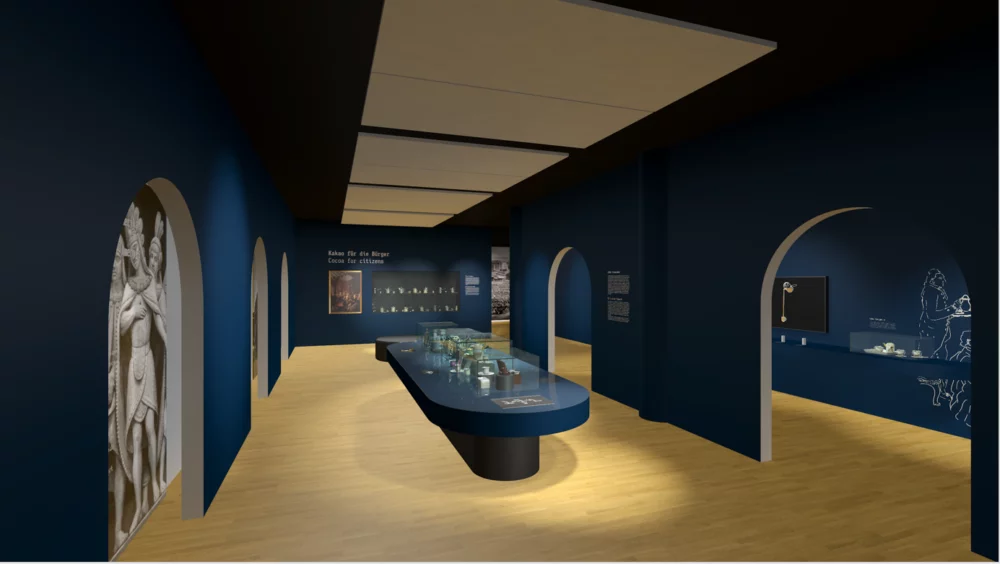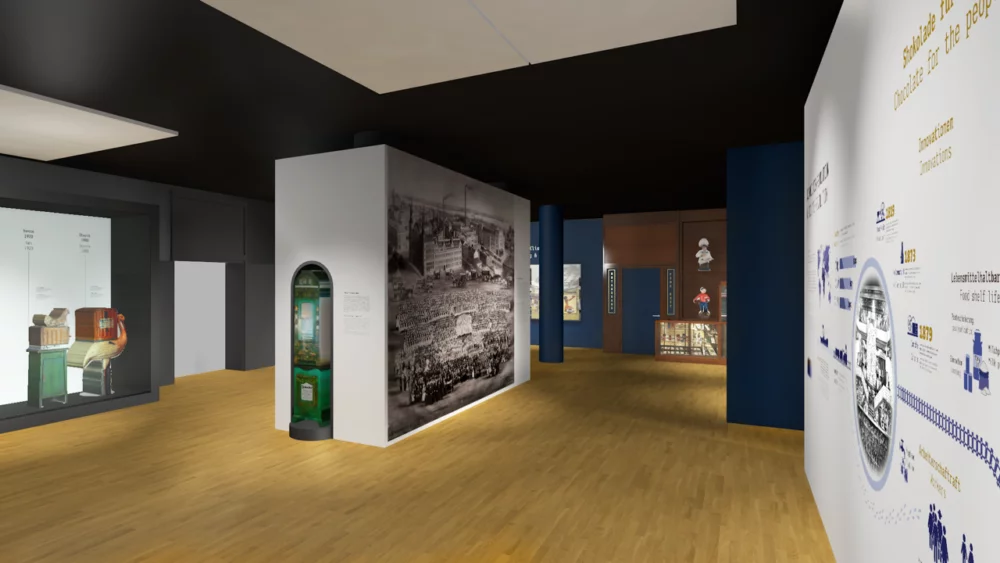
Construction fence
New permanent exhibition from June 2025
Look forward to an exciting new permanent exhibition on the "Time travel of cocoa"!
Here are some first impressions of the new exhibition:

Drinking cocoa 5,000 years ago
An archaeological dig in South America - what treasures will be found underground? Gold? Jewelry? No, a vessel with strange decorations comes to light. Are these supposed to be cocoa beans? Was there perhaps even cocoa in the vessel? The investigations in the laboratory bring certainty: there was a drink made from cocoa in the vessel and it is an incredible 5,000 years old - a sensation! The oldest cocoa drink in the world!
Cocoa - divine food
In many ancient cultures in Central and South America, cocoa beans are a recognized means of payment that can be used to pay at a market. No wonder that food or drink made from cocoa is so valuable that it is reserved for the elite or offered as a sacrifice to their gods and goddesses. Those who have to transport this precious cargo often only travel at night to protect themselves from theft. The ruler of the Aztecs, Moctezuma, filled several treasure houses with cocoa beans with regular tribute payments. According to tradition, he also drank several bowls of cocoa a day!

Chocolate comes to Europe
Cocoa beans arrive in Spain for the first time from what is now Mexico. From here, chocolate begins its triumphal march through Europe. As early as 1600, people in Seville agreed that not being able to drink chocolate was a great misfortune. But what is chocolate anyway? A food, a drink, perhaps a medicine? Is it even an aphrodisiac? Its benefits and dangers are debated among scholars. In any case, chocolate remained a rare and very expensive luxury for centuries. Silver tableware and chocolate services made from the finest porcelain became fashionable. For a long time, the aristocracy was a privileged consumer group. Over time, however, the first coffee houses and chocolate bars opened and the middle classes discovered chocolate for themselves. It is impossible to imagine life without chocolate, but it has also changed considerably over the centuries - it is now enjoyed sweet with sugar!

Mass production and exploitation
From around the middle of the 18th century, Europe changes rapidly: with industrialization, the population grows just as fast as the cities. Resourceful minds research and develop groundbreaking innovations. Factories now set the pace. Workers produce unprecedented quantities of products and machines that produce more. But at what price?
Tough working and general conditions lead to the impoverishment of workers. At the same time, many are now wealthier and consume more. Europe is exploiting other regions of the world as colonies to satisfy its hunger for raw materials. Traces of this exploitation can be found in historical sources and depictions, and often remain to this day. Chocolate is a contemporary witness to colonialism, racism, wars, poverty and prosperity.

Have we piqued your curiosity? These and many other exciting topics await you from June 2025 in the new permanent exhibition "Time travel of cocoa".
